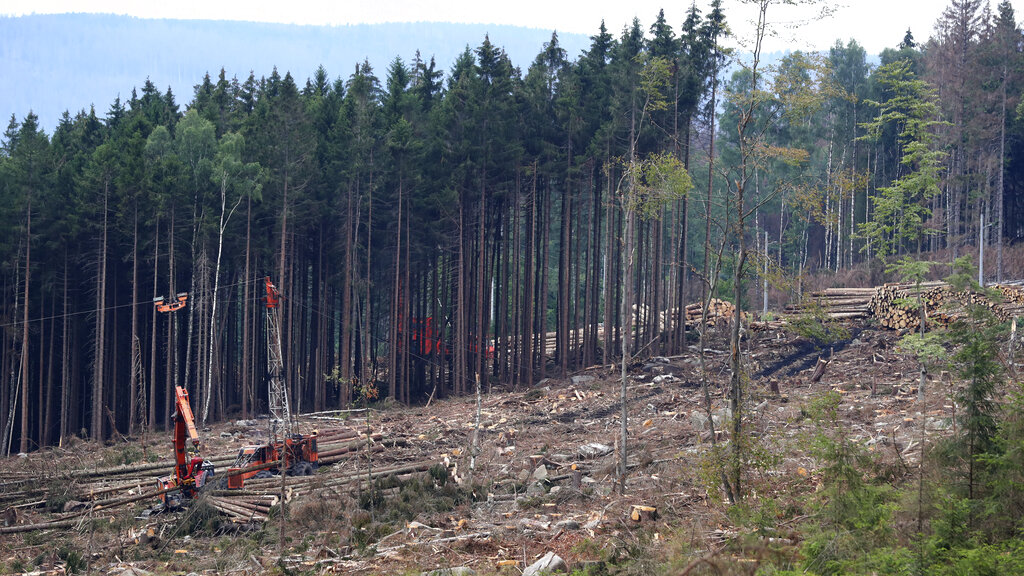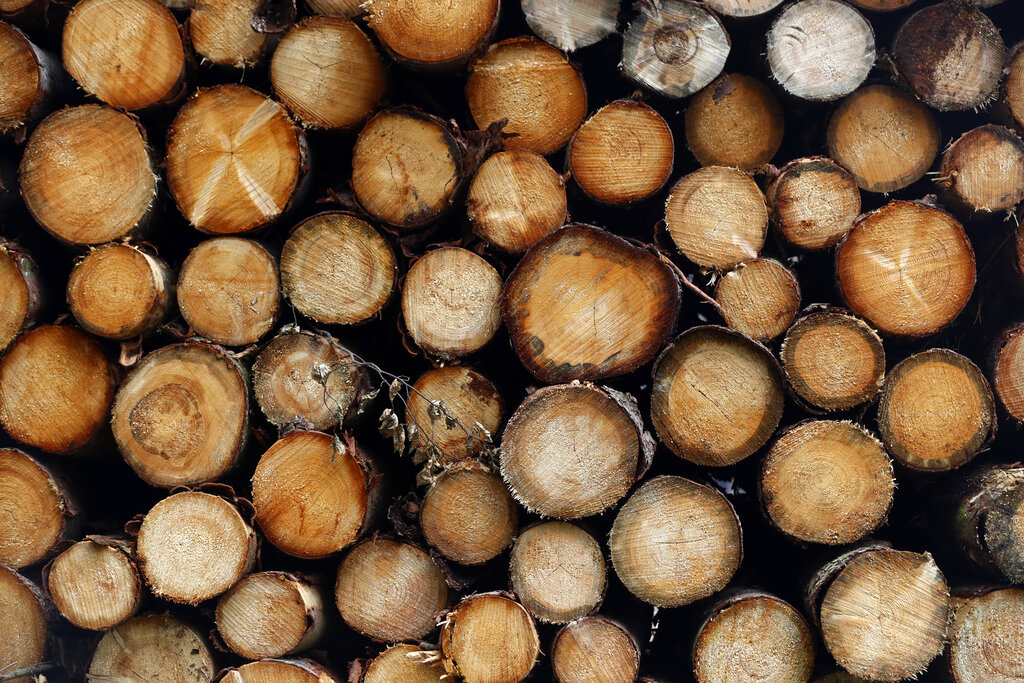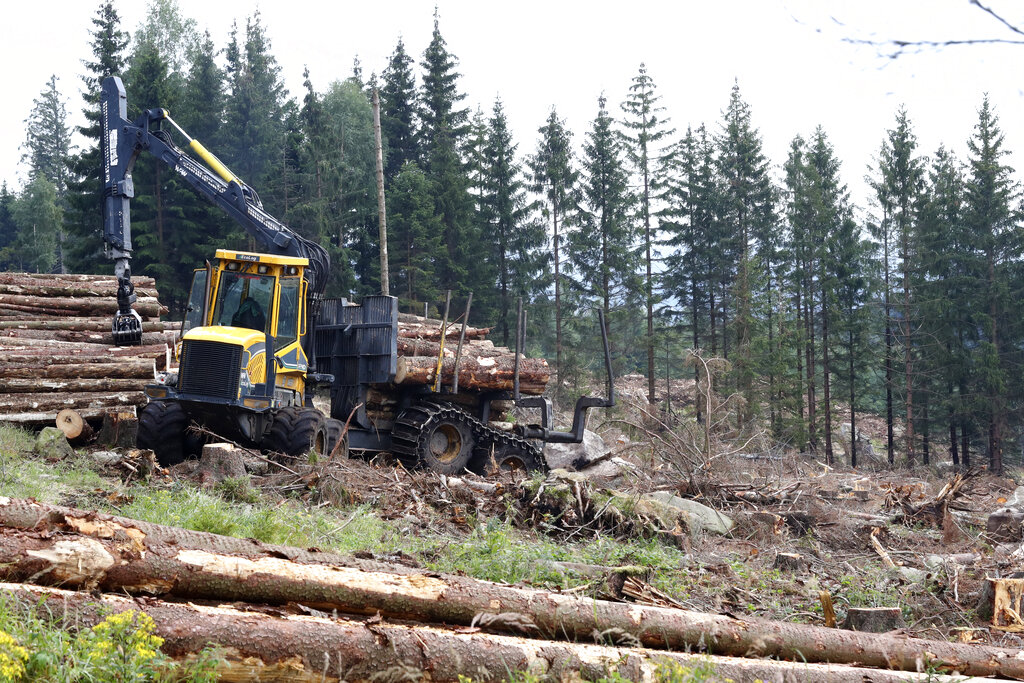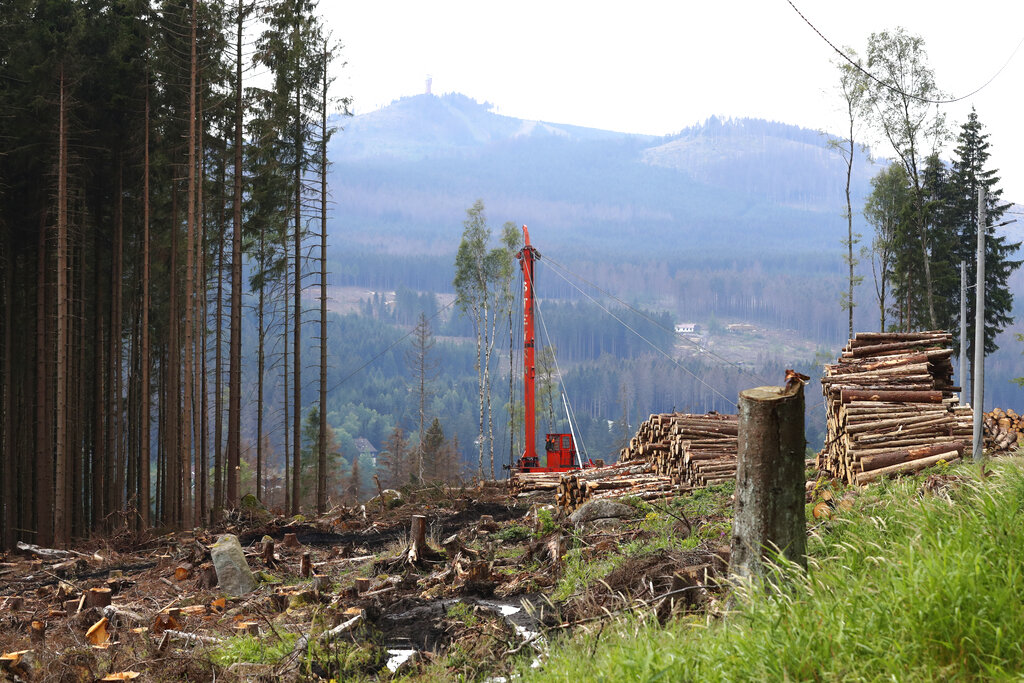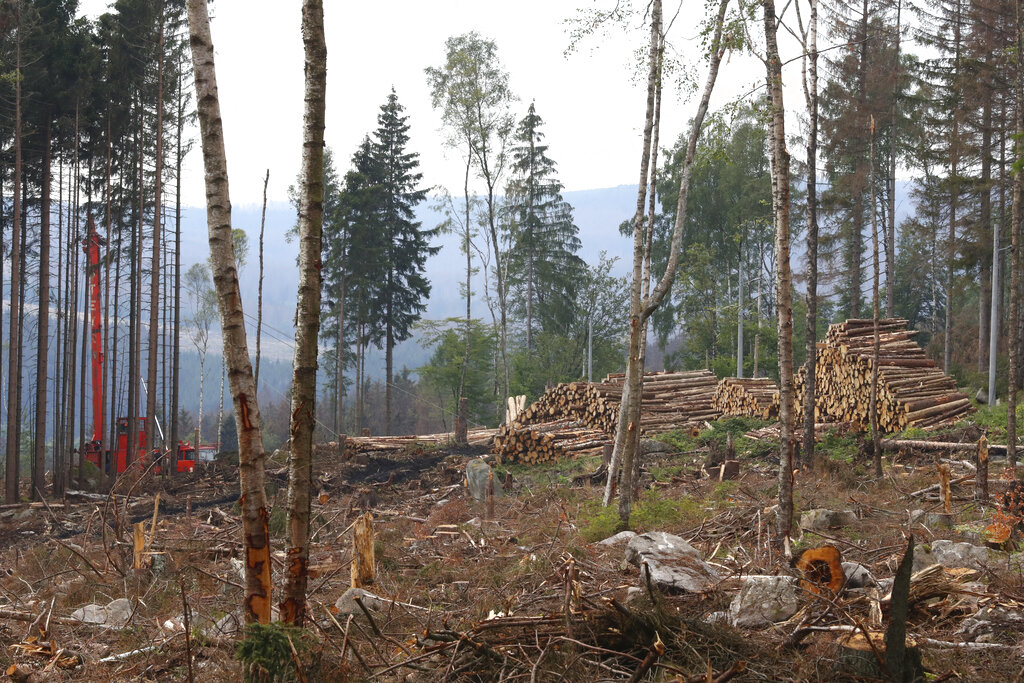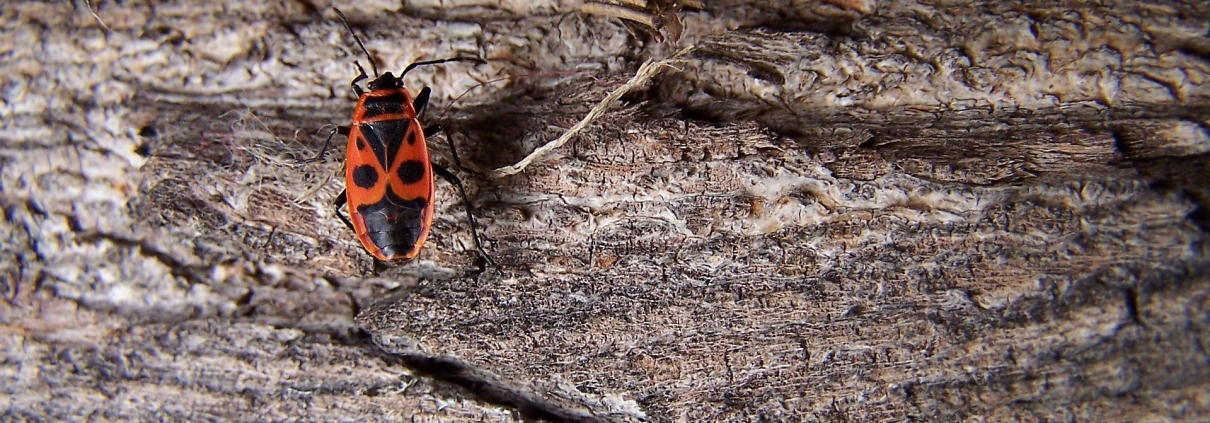Il coleottero che uccide le foreste tedesche
Vicino alla montagna Brocken, alta 1142 metri, a Schierke in Germania, il paesaggio delle famose foreste sta cambiando radicalmente per colpa dei cosiddetti “coleotteri della corteccia”, che uccidono gli alberi deponendo le loro uova nella corteccia. A questo punto bisogna per forza tagliare e accatastare i tronchi, che poi vengono portati via lasciando un paesaggio desolato. Già l’anno scorso milioni di metri cubi di foreste erano andati distrutti, e nelle prossime settimane si prevede di nuovo la stessa invasione. L’inverno mite ha favorito, infatti, lo sviluppo delle larve deposte l’anno scorso. (AP Photo / Matthias Schrader)

